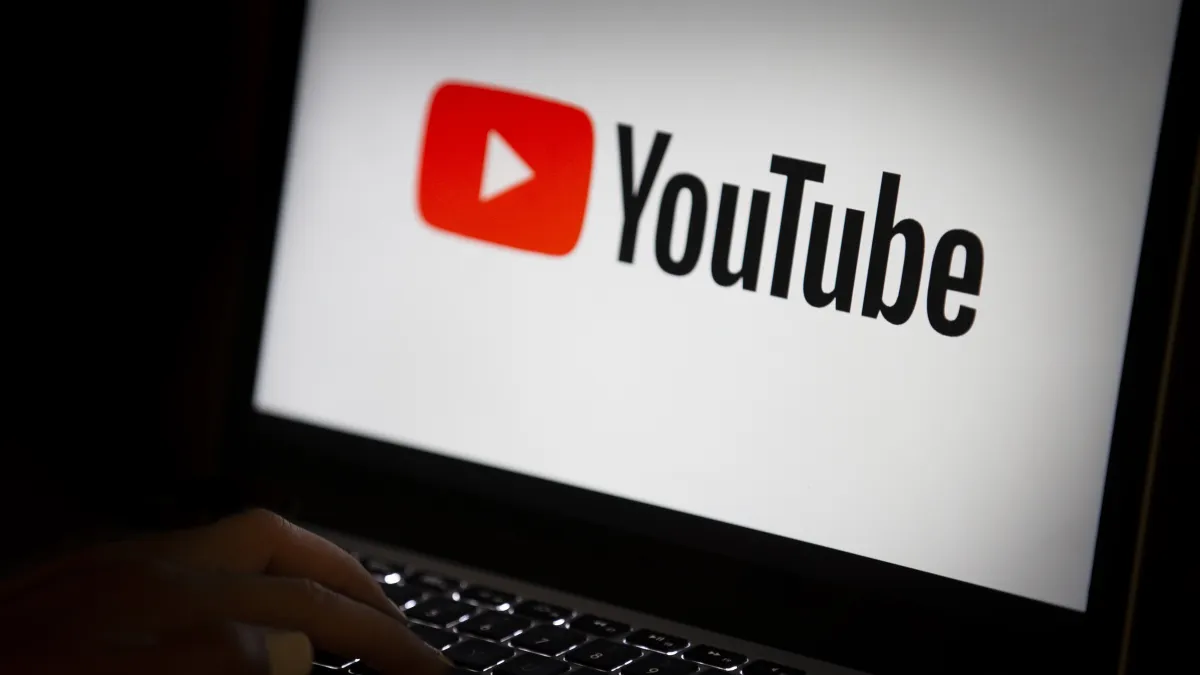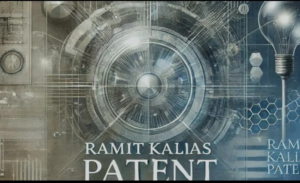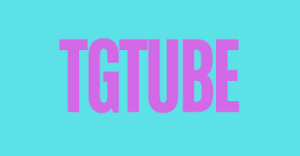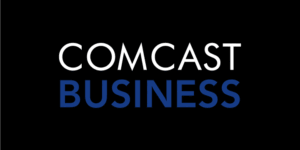
How YouTube Changed Digital Media
Introduction
Since YouTube launch in 2005, YouTube has revolutionized the digital media landscape, transforming how we create, consume, and share content. Initially a platform for sharing amateur videos, YouTube quickly evolved into a global phenomenon, influencing various aspects of digital media. It democratized content creation, allowing anyone with a camera and internet connection to become a creator, thereby giving rise to a new wave of influencers and independent media personalities.
YouTube’s impact extends beyond individual creators. It has reshaped the advertising industry, offering brands innovative ways to reach audiences through targeted ads and sponsored content. The platform’s algorithm, designed to recommend videos based on user preferences, has changed how we discover and engage with content, making personalized viewing experiences the norm.
Moreover, YouTube has become a vital educational resource, providing free access to tutorials, lectures, and informational videos on virtually any topic. It has also played a significant role in the music industry, helping artists reach global audiences without traditional gatekeepers.
In essence, YouTube has not only changed digital media but has also influenced cultural trends, consumer behavior, and even political discourse. Its ongoing evolution continues to shape the future of digital media, making it an indispensable part of our daily lives.
YouTube: Revolutionizing Digital Media Since 2005
Since its inception in 2005, YouTube has fundamentally transformed the digital media landscape. What started as a simple platform for sharing home videos has grown into a global powerhouse that influences how we consume and create content. YouTube has made it possible for anyone with a camera and an internet connection to become a content creator, democratizing media production and giving rise to a new generation of influencers and independent artists. This shift has not only changed entertainment but also how we learn, shop, and even engage in social and political discourse. The platform’s recommendation algorithm has personalized our viewing experiences, making it easier to discover content tailored to our interests. Additionally, YouTube has revolutionized advertising by providing brands with innovative ways to reach their target audiences through targeted ads and sponsored content. Beyond entertainment, YouTube serves as an invaluable educational resource, offering tutorials, lectures, and how-to videos on virtually any topic. In essence, YouTube has not just changed digital media; it has become an integral part of our daily lives, continuously shaping and reflecting our culture and society.
How YouTube Transformed Content Creation
YouTube has completely transformed the world of content creation. Before its launch in 2005, creating and sharing videos was often limited to professionals with access to expensive equipment and distribution channels. YouTube changed all that by providing a free platform where anyone with a camera and internet connection could upload their videos. This democratization of content creation has given rise to countless new voices and talents, from vloggers and gamers to educators and activists. People can now share their stories, skills, and passions with a global audience, often from the comfort of their own homes. The platform’s ease of use and accessibility have also led to the creation of diverse content that caters to niche interests and communities. Additionally, YouTube’s monetization options, such as ad revenue and sponsorships, have enabled creators to turn their hobbies into full-time careers. This shift has not only changed how content is produced but also how it is consumed, with viewers now having an endless array of videos to choose from, tailored to their specific interests. In essence, YouTube has empowered individuals to become creators, reshaping the media landscape and making it more inclusive and dynamic.
YouTube’s Role in the Rise of Influencer Culture
YouTube has played a pivotal role in the rise of influencer culture, fundamentally changing how we interact with media and celebrities. Before YouTube, becoming a public figure often required connections in the entertainment industry or access to traditional media platforms. YouTube democratized this process by allowing anyone with a camera and internet connection to share their content with the world. This accessibility has given rise to a new breed of influencers—ordinary people who have built massive followings by sharing their passions, expertise, and daily lives. These influencers have become trusted voices in various niches, from beauty and fashion to gaming and education. They engage with their audiences in a more personal and relatable way than traditional celebrities, often fostering a sense of community and loyalty among their followers. Brands have quickly recognized the value of these influencers, partnering with them for marketing campaigns that feel more authentic and targeted. This shift has not only changed advertising but also how we perceive fame and influence. In essence, YouTube has empowered individuals to become influential figures in their own right, reshaping the media landscape and creating a more diverse and inclusive digital culture.
How has YouTube influenced consumer behavior?
YouTube has significantly influenced consumer behavior in several ways:
- Authenticity and Trust: YouTubers are often seen as more authentic and relatable compared to traditional advertisements. Their personal experiences and honest reviews build trust with their audience, making viewers more likely to consider their recommendations1.
- Product Reviews and Demonstrations: Detailed product reviews and demonstrations on YouTube provide consumers with valuable insights. Seeing a product in action helps viewers understand its features and benefits, aiding in informed purchasing decisions1.
- Trendsetting and Product Discovery: YouTubers often introduce new trends and products to their audiences. Their influence can create buzz around new items, driving consumer interest and demand1.
- Sponsored Content and Collaborations: Many YouTubers collaborate with brands to create sponsored content. When done transparently, these collaborations can effectively promote products and services, benefiting both the YouTuber and the brand1.
- Community Engagement: The interactive nature of YouTube allows for community engagement through comments, likes, and shares. This interaction can further influence consumer behavior as viewers discuss and share their own experiences with products.
Overall, YouTube’s combination of engaging content,
trusted influencers, and interactive features makes it a powerful platform for shaping consumer perceptions and driving purchasing behavior.
The Power of YouTube in Shaping Modern Entertainment
YouTube has revolutionized modern entertainment by making it more accessible, diverse, and interactive. Unlike traditional media, YouTube allows anyone with a camera and internet connection to create and share content, leading to a vast array of videos on virtually any topic imaginable. This democratization of content creation has given rise to countless new voices and perspectives, enriching the entertainment landscape. Additionally, YouTube’s recommendation algorithms help users discover new content tailored to their interests, keeping them engaged and entertained. The platform’s interactive features, such as comments, likes, and shares, foster a sense of community and allow viewers to connect with creators and other fans. Moreover, YouTube has enabled the rise of influencers and content creators who have built loyal followings and even turned their channels into full-time careers. These creators often collaborate with brands, shaping consumer trends and preferences. Overall, YouTube’s blend of accessibility, diversity, and interactivity has made it a powerful force in shaping modern entertainment, offering something for everyone and continuously evolving to meet the changing tastes of its audience.
YouTube and the Democratization of Video Content
YouTube has played a pivotal role in democratizing video content, making it possible for anyone with a camera and internet connection to share their stories, ideas, and creativity with the world. This platform has broken down traditional barriers to entry in the media industry, allowing individuals from diverse backgrounds to become content creators. Unlike traditional media, which often requires significant resources and connections, YouTube offers a level playing field where talent and originality can shine. This has led to an explosion of diverse content, from educational tutorials and vlogs to music videos and short films. Creators can reach global audiences, build communities, and even monetize their content through ads and sponsorships. The interactive nature of YouTube, with features like comments, likes, and shares, fosters engagement and allows creators to receive direct feedback from their viewers. This two-way communication enhances the viewing experience and helps creators improve their content. Overall, YouTube’s democratization of video content has empowered individuals to express themselves, share their passions, and connect with others on a global scale, transforming the way we consume and create media.
Some challenges faced by YouTubers in maintaining their channels
YouTubers face several challenges in maintaining their channels:
- Content Creation: Consistently producing high-quality, engaging content is demanding. Creators need to keep their content fresh and relevant to retain their audience’s interest.
- Algorithm Changes: YouTube’s algorithm is constantly evolving, which can affect video visibility and discoverability. Understanding and adapting to these changes is crucial for maintaining and growing a channel1.
- Monetization: Earning a substantial income from YouTube can be challenging, especially for new creators. They need to meet specific criteria for monetization and often rely on multiple revenue streams like ads, sponsorships, and merchandise.
- Competition: With millions of creators on the platform, standing out is tough. Creators must find unique niches or angles to capture and retain viewers’ attention.
- Burnout: The pressure to constantly create and upload content can lead to burnout. Balancing content creation with personal life and mental health is a significant challenge.
- Copyright Issues: Navigating copyright laws and avoiding content strikes is essential. Even unintentional use of copyrighted material can lead to penalties.
- Audience Engagement: Maintaining a loyal audience requires continuous engagement through comments, live streams, and social media. This interaction is time-consuming but necessary for building a strong community.
These challenges require resilience, creativity, and a deep understanding of the platform to overcome.
How YouTube Redefined Advertising in the Digital Age
YouTube has completely transformed advertising in the digital age by offering a platform where brands can reach a global audience with targeted, engaging content. Unlike traditional TV ads, YouTube ads can be tailored to specific demographics, interests, and behaviors, making them more effective and relevant. The introduction of skippable ads, for instance, allows viewers to choose whether to watch an ad, which encourages advertisers to create more compelling content to capture attention quickly. Additionally, YouTube’s vast array of content creators provides brands with unique opportunities for influencer marketing. Collaborating with popular YouTubers allows brands to tap into established communities and gain credibility through trusted voices. The platform’s analytics tools also give advertisers detailed insights into ad performance, enabling them to optimize their campaigns in real-time. This data-driven approach ensures that advertising budgets are used more efficiently. Furthermore, YouTube’s interactive features, such as clickable links and call-to-action buttons, make it easy for viewers to engage with ads and take immediate action, whether it’s visiting a website or making a purchase. Overall, YouTube has redefined advertising by making it more personalized, interactive, and measurable, helping brands connect with consumers in more meaningful ways.
The Influence of YouTube on Music and Artists
YouTube has revolutionized the music industry by providing a platform where artists can share their work with a global audience without needing a record label. This has in part democratically promoted music distribution whereby many independent musicians have earned their recognition and fans.Artists like Justin Bieber and Shawn Mendes started their careers by posting videos on YouTube, showcasing their talent to millions. The platform also offers a space for diverse genres and niche music to thrive, giving listeners access to a wide variety of content. Additionally, YouTube’s monetization options, such as ad revenue and channel memberships, provide artists with new income streams. Music videos on YouTube often go viral, helping songs reach a broader audience quickly. The platform’s recommendation algorithm further aids in music discovery, suggesting new artists and tracks based on user preferences. Overall, YouTube has not only changed how music is consumed but also how it is created, promoted, and monetized, making it an indispensable tool for modern musicians.
YouTube’s Contribution to the Gig Economy
YouTube has significantly boosted the gig economy by providing a platform where individuals can turn their passions into profitable careers. Creators from various fields, such as education, entertainment, and lifestyle, can share their content with a global audience and earn money through ad revenue, sponsorships, and fan funding. This has allowed many people to work independently, without the need for traditional employment. For instance, educators can create tutorial videos, musicians can share their latest tracks, and fitness trainers can offer workout routines, all while earning a steady income. YouTube’s flexibility enables creators to work on their own schedules, making it an attractive option for those seeking work-life balance. Additionally, the platform’s vast reach helps creators build a loyal following, which can lead to further opportunities like brand partnerships and merchandise sales. Overall, YouTube has not only democratized content creation but also provided a viable path for many to thrive in the gig economy.
Educational Revolution: YouTube as a Learning Platform
YouTube has sparked an educational revolution by making learning accessible to everyone, anywhere, anytime. With millions of educational videos available, students can find tutorials on virtually any subject, from math and science to art and history. This platform has become a valuable resource for teachers as well, who can use videos to supplement their lessons and engage students in new ways. Channels like Khan Academy and CrashCourse offer high-quality content that helps explain complex topics in an easy-to-understand manner. Additionally, YouTube allows for self-paced learning, enabling students to revisit and review material as needed, which is particularly beneficial for those who need extra time to grasp certain concepts. The interactive nature of YouTube, with its comment sections and community features, also fosters a collaborative learning environment where students can ask questions and share knowledge. Overall, YouTube has transformed traditional education by providing a dynamic, flexible, and inclusive learning platform that caters to diverse learning styles and needs.
How YouTube Fostered a Global Community
YouTube has played a pivotal role in fostering a global community by connecting people from all corners of the world through shared interests and passions. The platform allows anyone with an internet connection to upload videos, making it possible for diverse voices to be heard and seen. This inclusivity has led to the creation of countless online communities where people can discuss, learn, and collaborate on various topics, from cooking and gaming to education and activism. YouTube’s comment sections and live chat features enable real-time interaction, allowing viewers to engage directly with content creators and each other. This sense of connection and belonging transcends geographical boundaries, creating a virtual space where cultural exchange and mutual understanding can flourish. Additionally, YouTube’s recommendation algorithm helps users discover new content and communities, further expanding their horizons. By providing a platform for open dialogue and creative expression, YouTube has not only democratized content creation but also built a global network of individuals united by their shared interests and experiences.
YouTube and the Future of Digital Media
YouTube is shaping the future of digital media by continuously evolving to meet the changing needs of its users. Initially a platform for sharing simple videos, YouTube has grown into a powerhouse of content creation, distribution, and monetization. It has pioneered new ways for creators to earn money, such as through ad revenue, channel memberships, and Super Chats during live streams. This has enabled many to turn their hobbies into full-time careers. YouTube’s algorithm also plays a crucial role in content discovery, helping users find videos tailored to their interests, which keeps them engaged and coming back for more. Additionally, YouTube has embraced new technologies like 4K video, virtual reality, and live streaming, ensuring it stays at the forefront of digital innovation. As traditional media continues to decline, YouTube’s influence is only expected to grow, offering a more interactive and personalized viewing experience. By fostering a global community of creators and viewers, YouTube is not just a platform but a cultural phenomenon that is redefining how we consume and interact with media.
Conclusion
YouTube has fundamentally transformed the landscape of digital media since its inception in 2005. Initially a simple platform for sharing videos, it has evolved into a global powerhouse that influences various aspects of society. By democratizing content creation, YouTube has empowered individuals to become creators, bypassing traditional media gatekeepers. This shift has led to the rise of viral content and new forms of entertainment, education, and communication.
Moreover, YouTube’s innovative monetization strategies have provided creators with opportunities to earn revenue, fostering a new economy of digital influencers and entrepreneurs. The platform’s algorithm-driven recommendations have also changed how audiences discover and consume content, making personalized viewing experiences the norm.
In essence, YouTube has not only revolutionized how we share and consume media but has also played a pivotal role in shaping the digital age. Its impact on culture, business, and technology continues to grow, making it a cornerstone of modern digital media.
FAQ’s
1. How has YouTube democratized content creation?
YouTube has significantly democratized content creation by allowing anyone with a camera and internet access to upload videos. This accessibility has broken down barriers, making it possible for individuals without professional equipment or connections to become creators. From vloggers to educators, anyone can share their content with a global audience. This has led to a more inclusive and diverse media landscape, enabling niche interests to thrive and giving rise to new forms of entertainment and education.
2. How has YouTube impacted the advertising industry?
YouTube has significantly democratized content creation by allowing anyone with a camera and internet access to upload videos. This accessibility has broken down barriers, making it possible for individuals without professional equipment or connections to become creators. From vloggers to educators, anyone can share their content with a global audience. This has led to a more inclusive and diverse media landscape, enabling niche interests to thrive and giving rise to new forms of entertainment and education.
3. What role has YouTube played in the rise of influencer culture?
YouTube has played a key role in the rise of influencer culture by providing a platform where everyday people can build large followings by sharing their passions and expertise. Unlike traditional celebrities, YouTube influencers connect with their audiences on a more personal and relatable level, creating a sense of community. Brands have capitalized on this by partnering with influencers for marketing campaigns that feel more authentic, shifting how products are promoted and consumed.
4. In what ways has YouTube influenced education?
YouTube has revolutionized education by offering free, on-demand access to tutorials, lectures, and instructional videos on virtually any subject. Educational channels like Khan Academy and CrashCourse have made complex topics easier to understand, helping students and lifelong learners alike. The platform supports self-paced learning, allowing users to revisit content and learn at their own speed. YouTube has also enabled teachers to supplement traditional classroom teaching with engaging video content.
5. How has YouTube changed the music industry?
YouTube has reshaped the music industry by giving artists a platform to share their music without needing a traditional record label. Independent artists can reach global audiences, grow their fan base, and monetize their content through ads and sponsorships. Music videos on YouTube often go viral, helping songs gain widespread recognition quickly. The platform’s recommendation algorithm also aids in music discovery, introducing users to new artists based on their viewing history and preferences.





